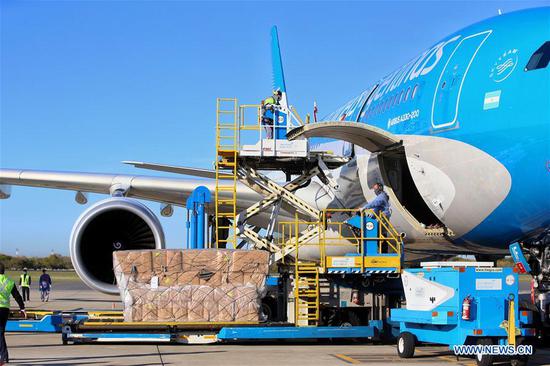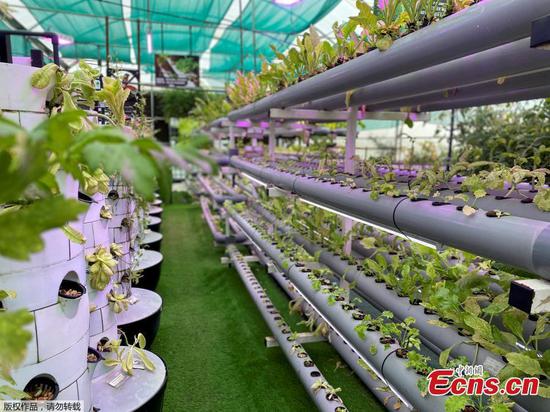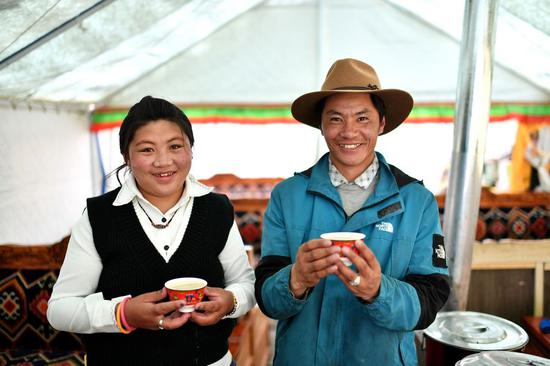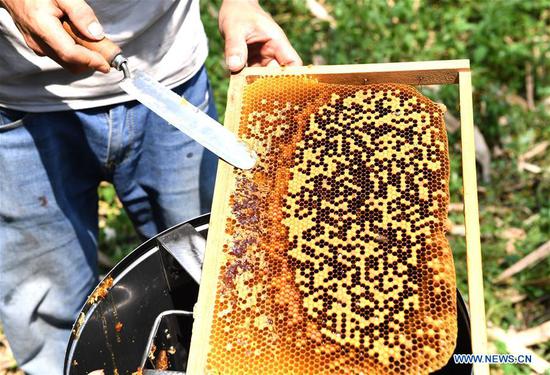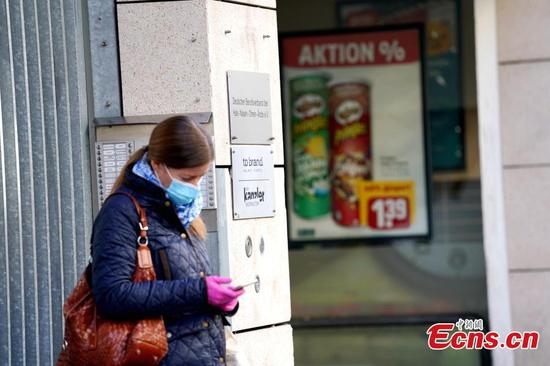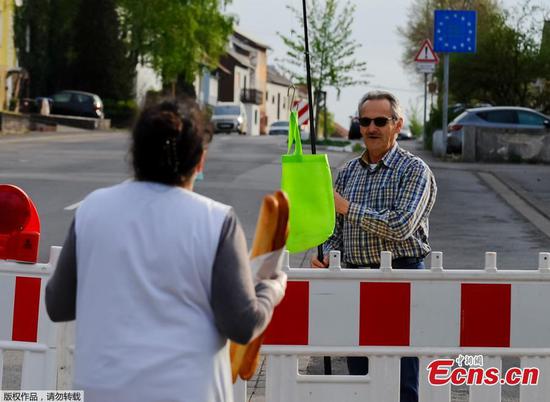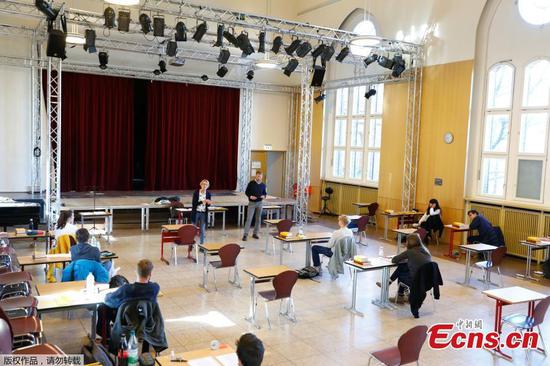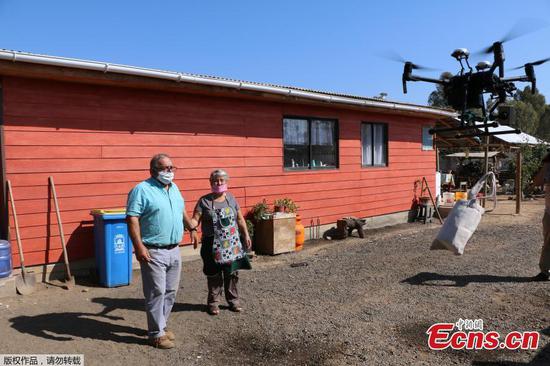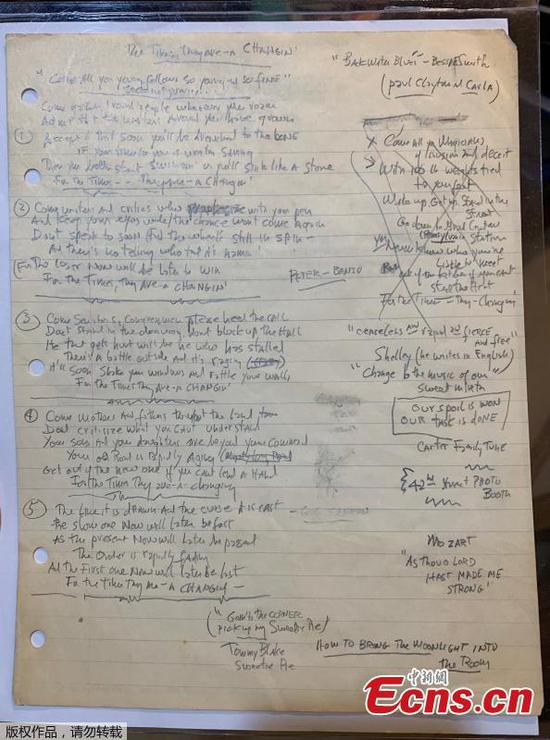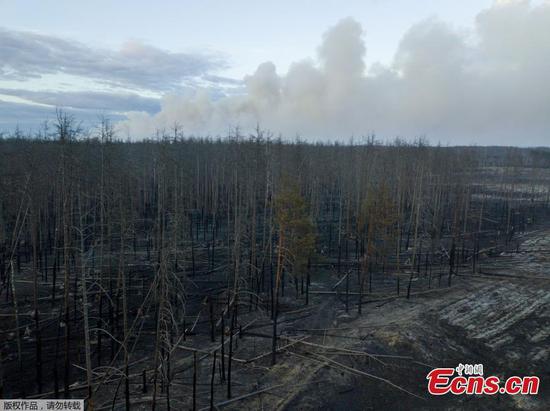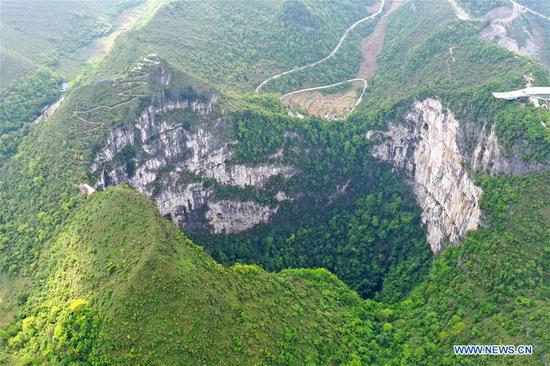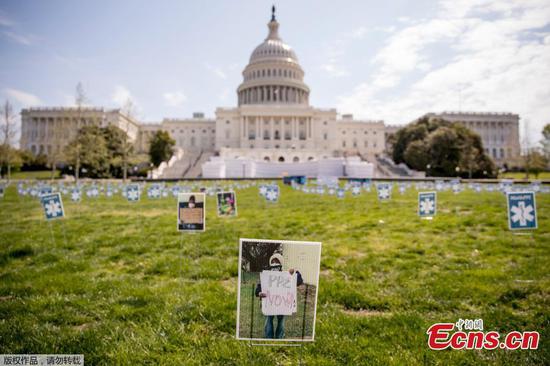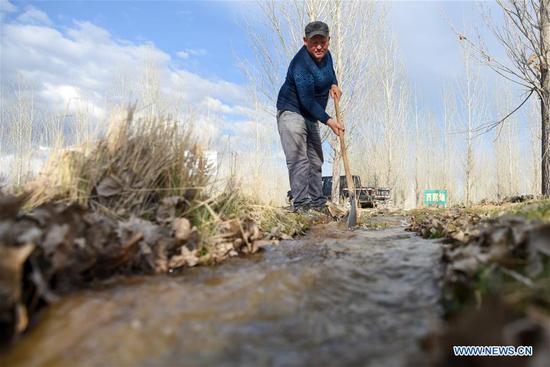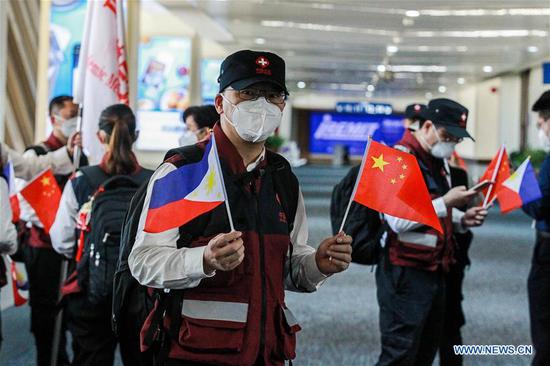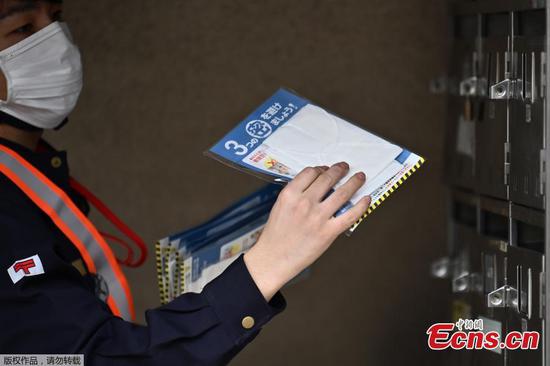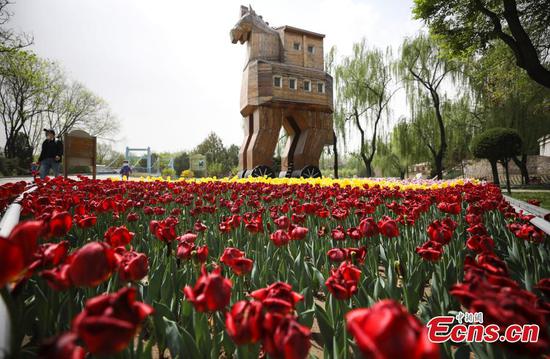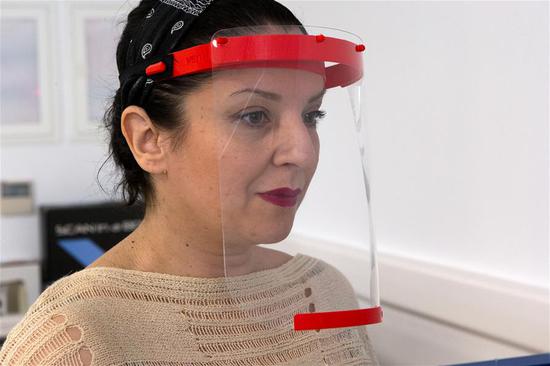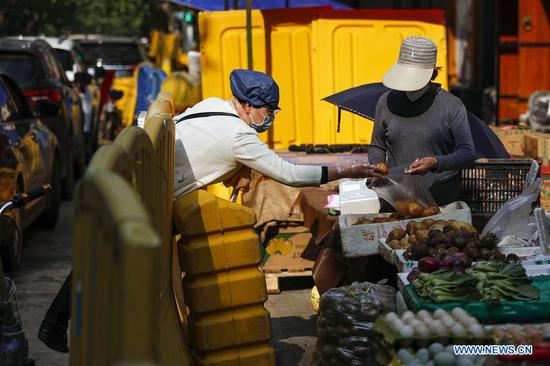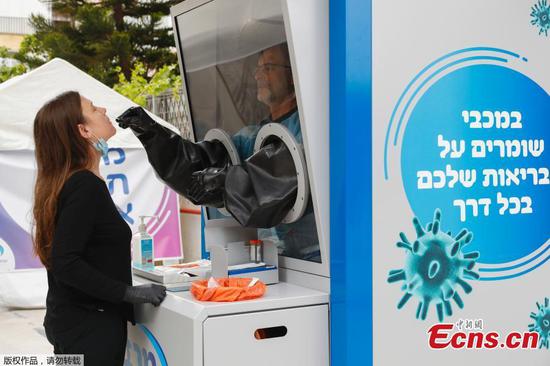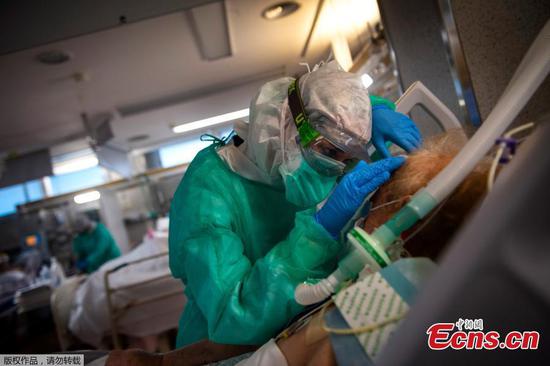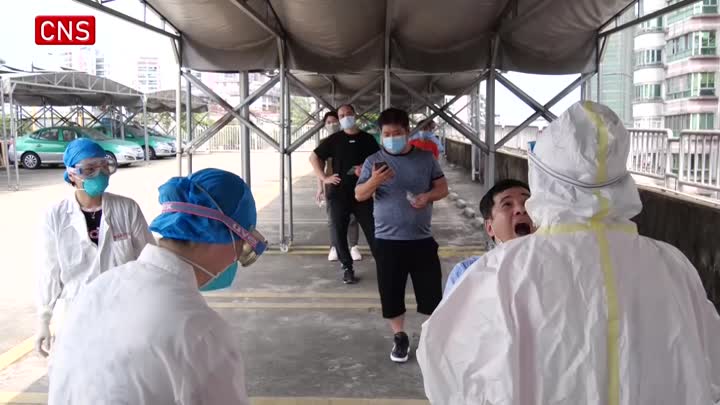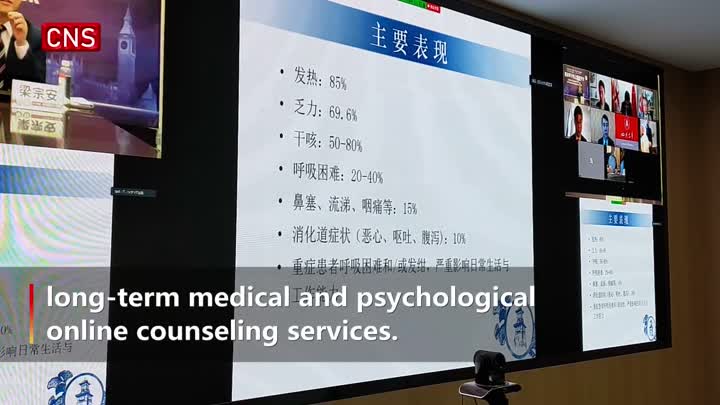
A staffer from Beijing's Chaoyang district checks information with a passenger arriving at Beijing West Railway Station on April 8, 2020. (Photo/Xinhua)
After Beijing's Chaoyang district was listed as a high-risk area for COVID-19 epidemic control by health authorities due to a recent cluster of infections involving four family members, district residents should think twice about travel plans, if they have any.
Huang Ling, a bank clerk in her 30s who works in Chaoyang, had planned to go to Guilin, a tourist city in Guangxi Zhuang autonomous region, during the upcoming Labor Day holiday starting on May 1.
Hearing the news, she has decided to stay at home.
According to Guangxi's health commission on Sunday, in order to control the epidemic, people who have stayed in Chaoyang district during the past 14 days must show negative nucleic acid test results within seven days as well as a "green code" to enter the region.
The green code is an indication that a person is symptom free according to a health code app, which includes basic health information and travel history. The app was developed as a result of the outbreak.
"I might still be able to go there because I believe the result of my test will be negative for sure, but I want to save the trouble," she said.
On April 18, Beijing authorities announced that the health code in neighboring Hebei province and Tianjin municipality will be accepted by the capital, which means people who come to Beijing from Hebei and Tianjin with a green code will not be required to self-quarantine at home.
The new policy has made it easier for people who live in nearby cities in Hebei and work in Beijing.
However, now that Chaoyang is listed as a high-risk area, once someone from Hebei comes to the district, he or she will be required to quarantine upon returning.
"I try to avoid Chaoyang when I drive back home," said Li Lei, a white-collar worker who works in Beijing's Dongcheng district but lives in Langfang city of Hebei.
Pang Xinghuo, deputy director of Beijing's Center for Disease Control and Prevention, said according to the national standard, areas with over 50 cumulative confirmed cases and a concentrated outbreak in the past 14 days are categorized as high-risk.
On April 14, Beijing reported an imported case that resulted in three more confirmed cases among family members. It is categorized as a concentrated case, which is why Chaoyang was listed as a high-risk area, Pang said.
The imported case was a Chinese male student who came home from Miami, Florida, in the United States. The three related cases are the student's mother, brother and grandfather. They were confirmed with COVID-19 when tested.
Up to 62 of his close contacts were put under medical isolation and observation. The student had completed his 14-day quarantine and tested negative multiple times. However, he developed symptoms of fever and cough two days after going home to live with his family. He was sent to the hospital, where he was confirmed to have contracted COVID-19.
According to the national standard, cities, counties and districts with no active cases or with no new infections in the past 14 days are categorized as low-risk; those with new infections in the past 14 days and fewer than 50 cumulative confirmed cases, or with over 50 cumulative confirmed cases but without a concentrated outbreak in the past 14 days, are categorized as medium-risk.









